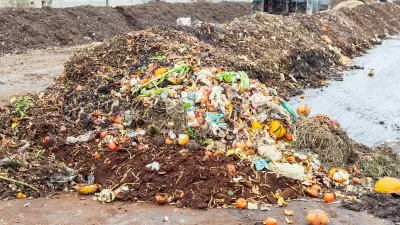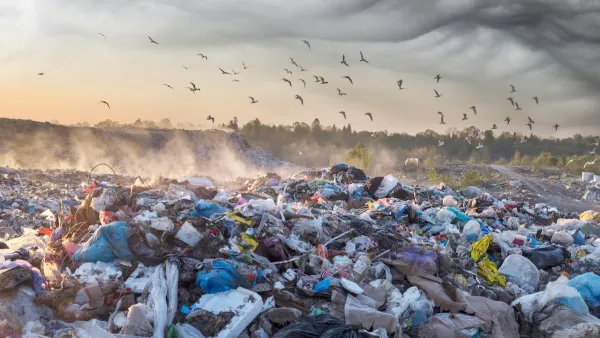Landfills are an overlooked but significant source of greenhouse gas emissions.

In an article for Governing, Carl Smith calls attention to the high levels of methane gas produced by organic waste in landfills. “In 38 states, landfills are the largest source of methane emissions. Reducing atmospheric concentrations of this powerful greenhouse gas is a top priority for climate action.”
According to Smith, the lack of accurate data makes it difficult to assess the scale of the problem. “Estimates for emissions from landfills have been largely based on extrapolation from what is known about organic waste decay and tonnage sent to landfills. Some data comes from methane detectors that workers carry across the surface of landfills, a hit-or-miss approach limited further by the fact that some areas are unsafe to walk over.” New data reveals that prior emissions estimates could be much lower than the real numbers.
Smith describes California’s ambitious organic waste diversion goals, which the state is not on track to meet. “A tracker from ReFED, a nonprofit that aggregates food waste data from public and proprietary data sets, shows that over 300,000 more tons of food waste went to California landfills in 2022 than in the year SB 1383 was enacted.” However, the state is making progress on launching composting programs and distributing organic waste bins. “It is an open question of how quickly governments and their partners can help them connect this threat to what goes in their trash bins, and convince them to change their habits.”
FULL STORY: Keeping Food Scraps Out of Landfills Is a Bigger Problem Than You Think

Planetizen Federal Action Tracker
A weekly monitor of how Trump’s orders and actions are impacting planners and planning in America.

Chicago’s Ghost Rails
Just beneath the surface of the modern city lie the remnants of its expansive early 20th-century streetcar system.

San Antonio and Austin are Fusing Into one Massive Megaregion
The region spanning the two central Texas cities is growing fast, posing challenges for local infrastructure and water supplies.

Since Zion's Shuttles Went Electric “The Smog is Gone”
Visitors to Zion National Park can enjoy the canyon via the nation’s first fully electric park shuttle system.

Trump Distributing DOT Safety Funds at 1/10 Rate of Biden
Funds for Safe Streets and other transportation safety and equity programs are being held up by administrative reviews and conflicts with the Trump administration’s priorities.

German Cities Subsidize Taxis for Women Amid Wave of Violence
Free or low-cost taxi rides can help women navigate cities more safely, but critics say the programs don't address the root causes of violence against women.
Urban Design for Planners 1: Software Tools
This six-course series explores essential urban design concepts using open source software and equips planners with the tools they need to participate fully in the urban design process.
Planning for Universal Design
Learn the tools for implementing Universal Design in planning regulations.
planning NEXT
Appalachian Highlands Housing Partners
Mpact (founded as Rail~Volution)
City of Camden Redevelopment Agency
City of Astoria
City of Portland
City of Laramie




























